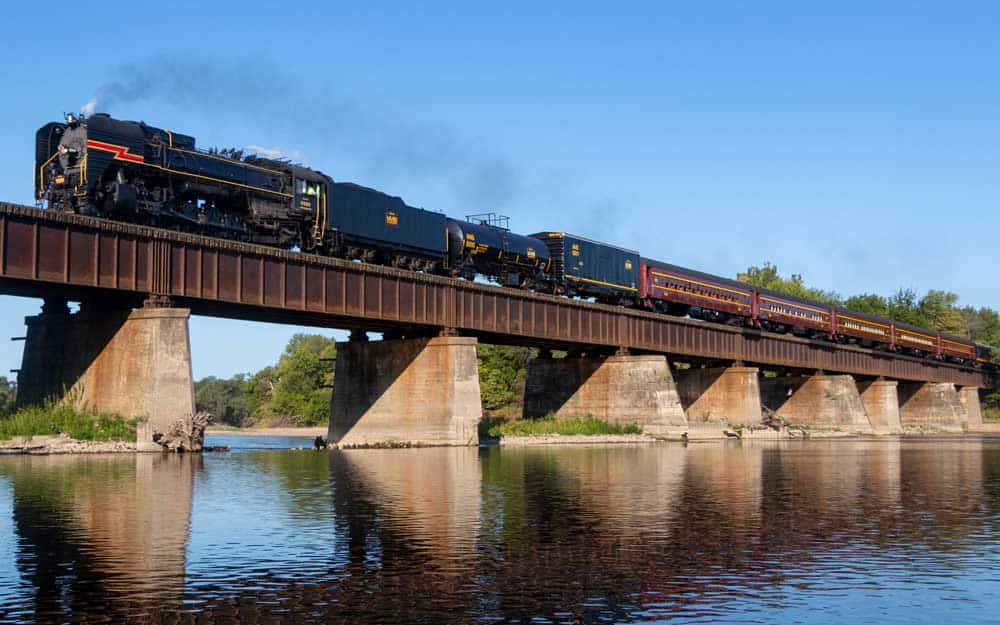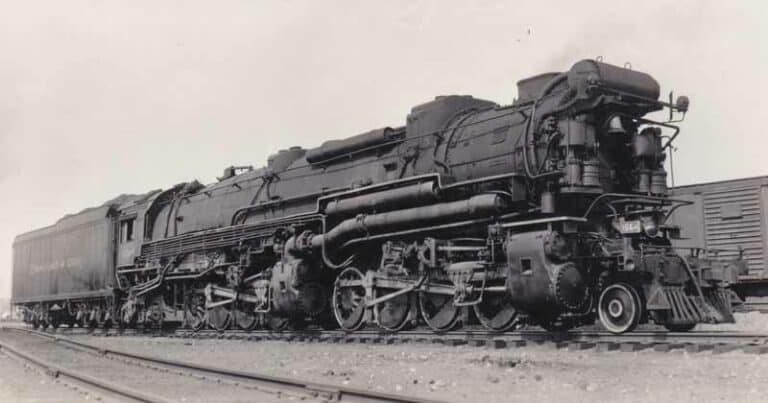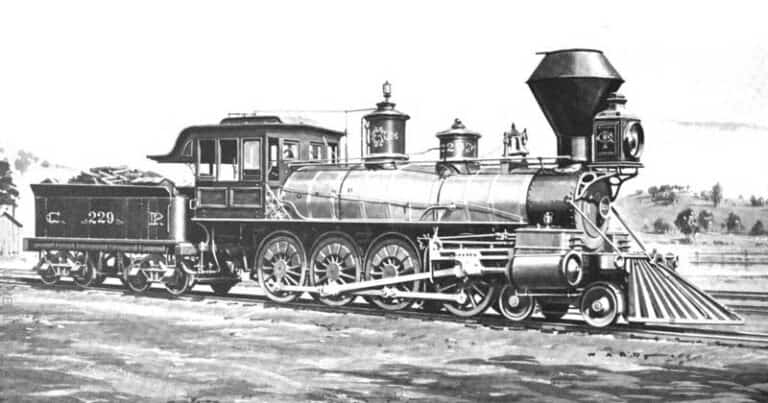2-10-2, Santa Fe Type
Before the Atchison, Topeka, and Santa Fe (ATSF) Railroad became famous for sponsoring the initial Disneyland Railroad, the company was envied for its forward thinking and problem solving. One of the most famous examples of this was the ATSF’s development of the 2-10-2 wheel arrangement steam locomotive. The benefits of the new design were immediately noticeable and other railroads and locomotive manufacturers quickly turned to the new design. As with many other wheel arrangements, the 2-10-2 was nicknamed the ‘Santa Fe’ type in honor of the ATSF being the first railroad to use the type.
For those not familiar with the Whyte Notation, the 2-10-2 has two pilot wheels, ten driving wheels, and two trailing wheels. This locomotive type is sometimes depicted as:
- oOOOOOo

History of the 2-10-2 Santa Fe Type
The 2-10-2 arrangement dates back to 1903 and was developed to counteract problems the ATSF faced with Raton Pass. The company was using 2-10-0 (Decapod Type) locomotives as pushers. Unfortunately, the grade of Raton Pass made it difficult for Decapods to reverse and it was easy for these locomotives to derail. The company added a trailing truck which made the travel back down much easier. In addition to the added stability, the addition of the extra trailing truck allowed the locomotive to carry a larger firebox than the 2-10-0.
While the new type had benefits, there were several drawbacks to the design. While the additional wheels made it easier to reverse, it made navigating curves more difficult. To combat this, smaller wheels were used (typically 64″ in diameter). The smaller wheels, along with the additional weight limited the speed of the Santa Fe type to a maximum of about 35 miles per hour. Furthermore the main rod on the Santa Fe connected to the middle coupled axle. This design caused the locomotive to waddle back and forth, which is known as ‘nosing’ in the railroad community, especially near maximum speed.

By the mid 1920s, the Santa Fe type saw her production decline in favor of the 2-10-4 design; and by 1930, American manufactures stopped producing the locomotive. Overall there were approximately 2200 of the 2-10-2 type locomotives built and about 350 of those belonged to the ATSF. Approximately 500 Santa Fe types were built with specifications from the United States Railroad Administration’s designs during World War 1.
Although the United States may have phased out steam locomotives in general, many other countries continued to produce and utilize these machines. In fact, Iowa Interstate #6988 is a Santa Fe type that was built in China in 1985!

Where to See a 2-10-2 Santa Fe Type
Many Santa Fe type locomotive types saw the unenviable end of a scrappers torch, but there are still a handful of these locomotives that have been preserved. The only remaining 2-10-2 train that actually operated on the ATSF is on permanent display at a visitors center in Bartlesville, Oklahoma.
Other 2-10-2’s can be found at the Museum of Transportation in Saint Louis, Missouri and National Railroad Museum in Green Bay, Wisconsin.

A longtime railfan, Bob enjoys the research that goes into his articles. He is knowledgeable on many railroad topics and enjoys learning about new topics. You can get a hold of Bob at his email link below.







